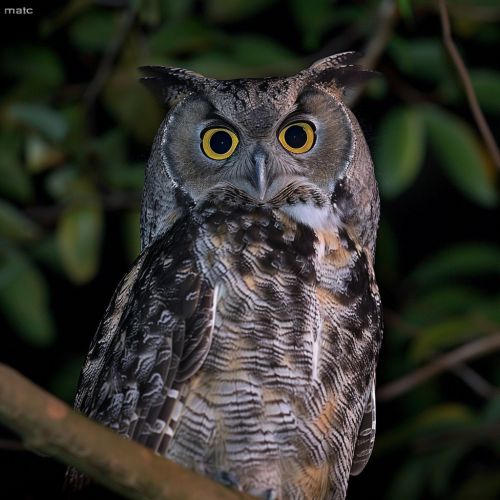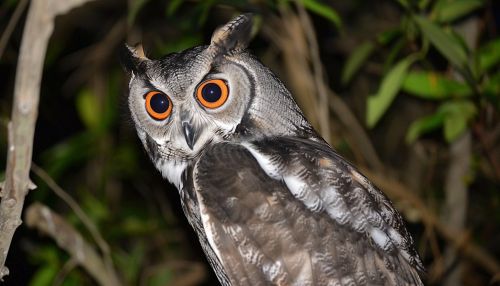Night Vision
Introduction
Night vision refers to the ability to see in low-light conditions. This capability is essential for various species, including humans, and is achieved through a combination of biological and technological means. In the animal kingdom, night vision is a crucial adaptation for survival, enabling nocturnal predators and prey to navigate and hunt in the dark. In human applications, night vision technology is used in military, law enforcement, and recreational contexts.
Biological Night Vision
Anatomy of the Eye
The human eye is equipped with two types of photoreceptor cells: rods and cones. Rods are more sensitive to low light levels and are primarily responsible for night vision. They contain a pigment called rhodopsin, which is highly sensitive to light and enables vision in dim conditions. Cones, on the other hand, are responsible for color vision and function best in bright light.
Adaptations in Animals
Many animals have evolved specialized adaptations to enhance their night vision. For example, cats and owls possess a higher density of rod cells compared to humans, which allows them to see better in the dark. Additionally, some animals have a reflective layer behind the retina called the tapetum lucidum, which increases the amount of light available to photoreceptors by reflecting it back through the retina.
Nocturnal vs. Diurnal Vision
Nocturnal animals, such as bats and raccoons, have eyes adapted for low-light conditions. These adaptations include larger pupils, which allow more light to enter the eye, and a higher concentration of rod cells. Diurnal animals, like humans and birds, have eyes adapted for daylight vision, with a higher concentration of cone cells for color detection and sharper vision.


Technological Night Vision
History
The development of night vision technology began during World War II, with the invention of the first generation of night vision devices (NVDs). These early devices used active infrared (IR) illumination, which required an IR light source to illuminate the target. The reflected IR light was then detected by the NVD, allowing the user to see in the dark.
Types of Night Vision Devices
Image Intensifiers
Image intensifiers are a common type of night vision technology. They work by amplifying available light, including near-infrared light, to produce a visible image. These devices use a photocathode to convert photons into electrons, which are then amplified and converted back into visible light by a phosphor screen. Image intensifiers are widely used in military and law enforcement applications.
Thermal Imaging
Thermal imaging devices detect the heat emitted by objects and create an image based on temperature differences. Unlike image intensifiers, thermal imagers do not rely on ambient light and can function in complete darkness. They are particularly useful for detecting living beings and are commonly used in search and rescue operations, as well as in surveillance.
Digital Night Vision
Digital night vision devices use a digital sensor to capture light and convert it into an electronic signal, which is then processed to produce a visible image. These devices often include features such as video recording and image enhancement. Digital night vision is becoming increasingly popular due to its versatility and affordability.
Applications of Night Vision
Military
Night vision technology is extensively used in military operations to enhance situational awareness and improve combat effectiveness. Soldiers equipped with night vision goggles (NVGs) can navigate and engage targets in low-light conditions, giving them a tactical advantage. Night vision is also used in surveillance, reconnaissance, and target acquisition.
Law Enforcement
Law enforcement agencies use night vision technology for various purposes, including surveillance, search and rescue, and tactical operations. Night vision devices enable officers to conduct operations in low-light environments, improving their ability to apprehend suspects and ensure public safety.
Recreational
Night vision technology is also popular in recreational activities such as hunting, wildlife observation, and night photography. Enthusiasts use night vision devices to observe nocturnal wildlife and capture images in low-light conditions, providing a unique perspective on the natural world.
Challenges and Limitations
Image Quality
One of the primary challenges of night vision technology is maintaining image quality in low-light conditions. Image intensifiers can produce grainy or noisy images, especially in extremely dark environments. Thermal imagers, while effective in detecting heat, may lack the detail and resolution of image intensifiers.
Cost
High-quality night vision devices can be expensive, limiting their accessibility to certain users. Military-grade equipment, in particular, can be prohibitively costly for civilian use. However, advancements in technology are gradually reducing the cost of night vision devices, making them more accessible to a broader audience.
Environmental Factors
Environmental conditions, such as fog, rain, and smoke, can affect the performance of night vision devices. Thermal imagers are less affected by these conditions compared to image intensifiers, but they can still experience reduced effectiveness in certain scenarios.
Future Developments
Advancements in Sensor Technology
Ongoing research and development in sensor technology are leading to significant improvements in night vision devices. Innovations such as higher-resolution sensors, advanced image processing algorithms, and enhanced materials are contributing to better image quality and performance in low-light conditions.
Integration with Other Technologies
The integration of night vision technology with other systems, such as augmented reality (AR) and artificial intelligence (AI), is opening new possibilities for its application. For example, AR overlays can provide additional information to users, while AI algorithms can enhance image processing and target recognition.
Miniaturization
Advancements in miniaturization are making night vision devices smaller, lighter, and more portable. This trend is particularly beneficial for applications where mobility and ease of use are critical, such as in military and law enforcement operations.
